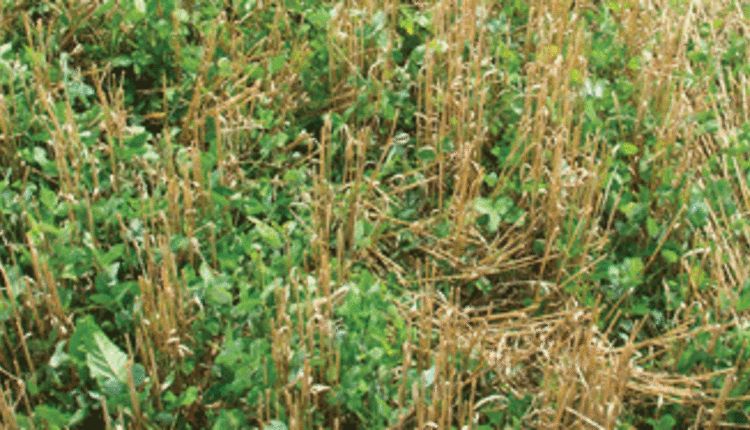The author is the UW-Extension crops and soils educator in Rock County, Wis.
If you grow wheat as part of your dairy cropping mix, this could be a good time to try "frost seeding" red clover to boost forage production. But it is important to follow seeding recommendations. The net result is low-cost forage establishment . . . the only inputs are seed and spreading. If seed is mixed and applied with nitrogen fertilizer in the spring, establishment cost is eliminated and seed becomes the only expense.
For many dairy producers, having straw either for bedding or an ingredient in the TMR (total mixed ration) to harvest is often a key factor when deciding to grow wheat. Unfortunately, straw removal raises the chance of soil erosion. And if corn silage is part of the field's rotation, the field may have a hard time meeting "T" or the tolerable soil loss rate over the term of the rotation. Interseeded clover plants are small but well-established at wheat harvest time. Postharvest they will develop a full canopy within a few weeks, offering season-long soil protection.
Clover can be harvested in fall as an annual forage, or the stand can be managed for long-term production. The table shows forage yield and quality from mid-October cutting when stands were clipped in early September to control late-summer weeds and reduce powdery mildew.
Properly managed, interseeded red clover will not reduce wheat yield or interfere with harvest. The only limitation of this practice on wheat production is reduced herbicide options for broadleaf weed control.
Red clover is typically "frost seeded" in mid-March (Upper Midwest) after snowmelt when cracks form on the surface. The frozen soil supports application equipment, and broadcast seed falls into the cracks which seal upon thawing. This seeding practice results in good stands. Seed can be broadcast with an ATV-mounted seeder or spread in conjunction with N application using airflow equipment. The following steps will help ensure success with both crops.
Wheat. Optimize wheat production with variety selection, early planting at the proper seeding rate and using the recommended N rate with proper application timing. Watch planting restrictions due to previous herbicide applications, especially with conventional corn hybrids or soybean varieties.
Red clover. Broadcast inoculated seed at a rate of 10 to 12 pounds per acre. Use common medium red clover seed for annual forage or recommended varieties if you intend to keep the stand. Improved varieties are more expensive because they're bred for persistence and multiyear forage yield, unnecessary traits for annual forage. If possible, double spread seed at half rates, splitting the seams from the first application to ensure uniform seed distribution and to avoid skips.
Medium red clover can be clipped to control weeds, remove diseased tissue and prevent flowering. Red clover is susceptible to powdery mildew, and clipping late-August to early September results in new, healthy tissue while keeping plants vegetative and actively growing. Most successful practitioners use either a rotary mower or stalk chopper for this purpose. Clip as high as possible to just get weed flowers and diseased clover tissue.
If you plan to use the stand for just one cutting, terminate the clover in fall to aid subsequent field operations and prevent soil moisture use in spring. A combination of glyphosate and growth regulator (such as 2, 4-D) herbicides should be used to ensure complete kill. Fall tillage without chemical termination often leads to incomplete kill. Allow the stand a short period of regrowth between harvest and herbicide application to ensure complete spray interception.









